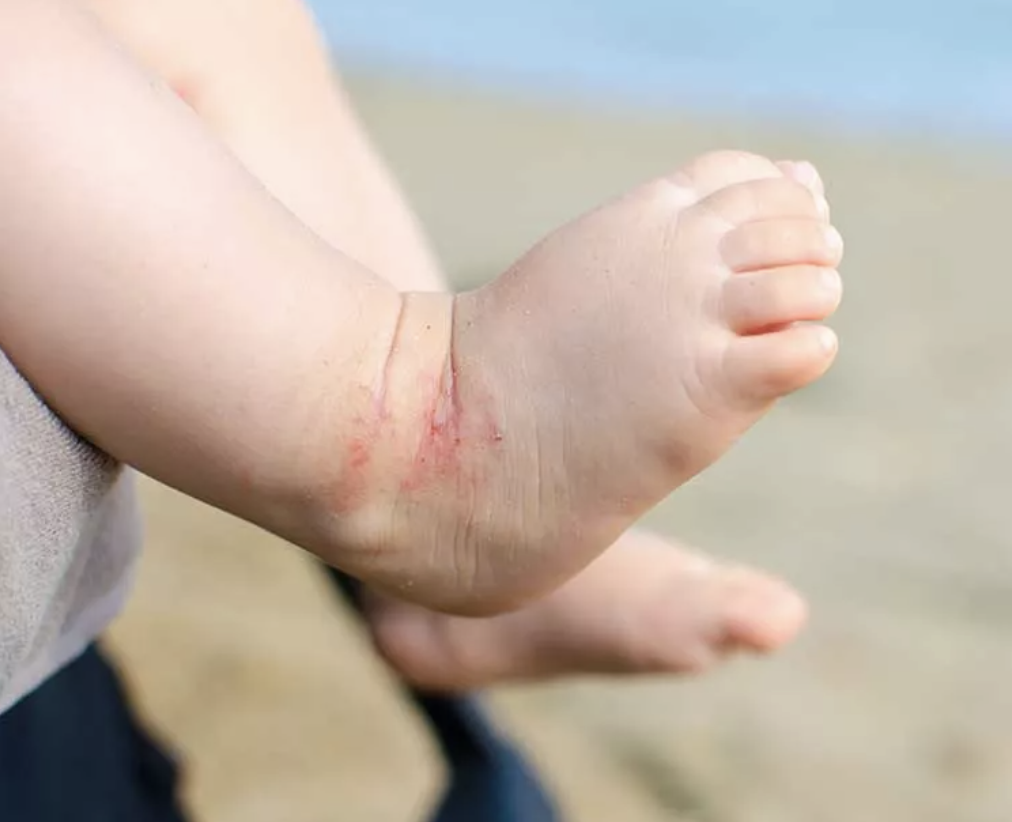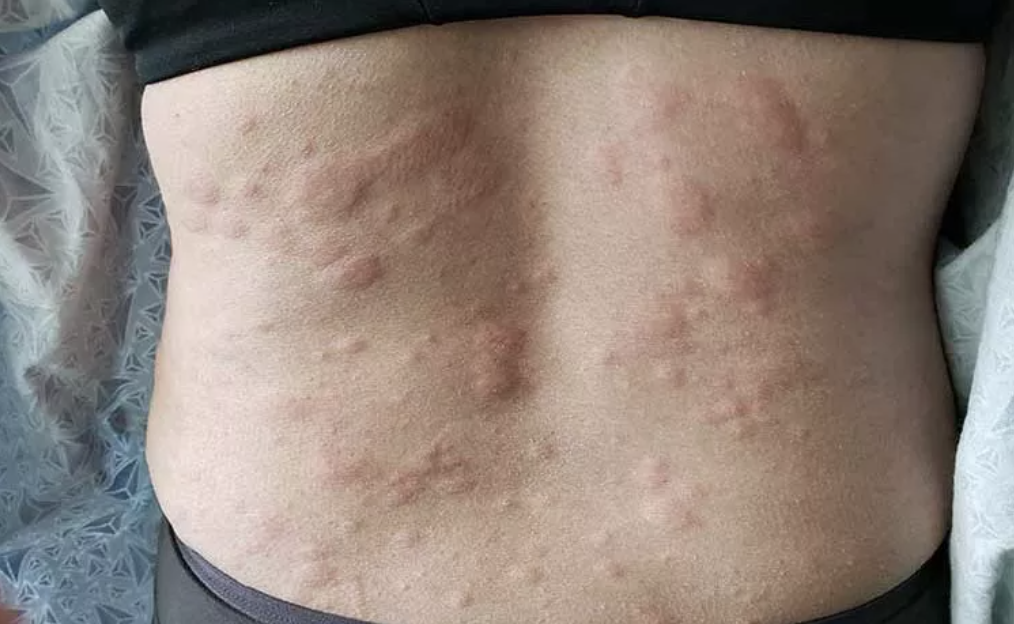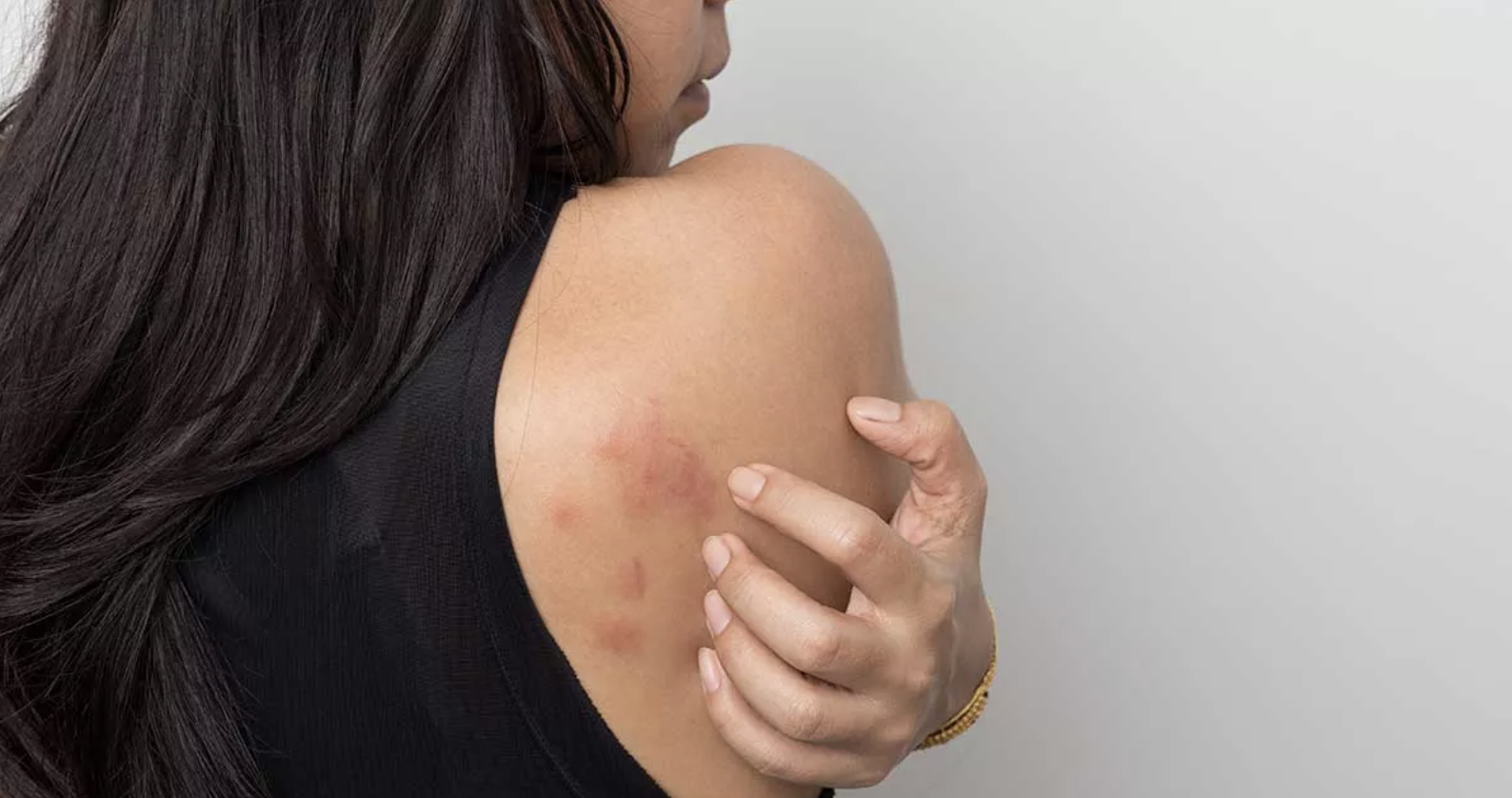What are hives?
Hives (or urticaria) are a type of skin rash. They are raised bumps or welts that are often red and itchy. Hives are quite common, and anyone can get them. An estimated 20 percent of people will have hives at some point in their lives.
If you are experiencing hives along with other signs of a serious allergic reaction known as anaphylaxis, use your epinephrine and seek care immediately.

What do hives look like?
Hives often appear red and will feel raised when touched. They come in various shapes and sizes. They can be localized (only in one part of the body) or spread out across the body. When pressed on, the center of the hive will turn white. While typically red, the redness can be harder to see on darker skin. Individual hives can be small as one millimeter or as large as 6 to 8 inches in diameter.
How to get rid of (or treat) hives?
One of the best ways to get rid of hives is to identify what causes the symptoms and then work to avoid those triggers. If a trigger is not known or symptoms are severe, the first line of treatment is an antihistamine.
For years, doctors prescribed a class of antihistamines called first-generation H-antihistamines to patients with hives. The most commonly known first-generation H-antihistamine is Benadryl®. These antihistamines tend to have more side effects, such as drowsiness.
Doctors now prefer to prescribe second-generation H-antihistamines because they have fewer side effects. Some of the most common second-generation H-antihistamines include cetirizine (Zyrtec), loratadine (Claritin), desloratadine (Clarinex), fexofenadine (Allegra) and levocetirizine (Xyzal).
Antihistamines do not get rid of hives permanently. They are intended to help treat symptoms. If you have hives, it’s also recommended you avoid aspirin, non-steroidal anti-inflammatories (NSAIDs), alcohol and tight clothing, as these can worsen symptoms.
Can Benadryl® help with hives?
The first-generation H-antihistamines (such as Benadryl®) are faster acting, but they need to be used more often. They may have more side effects, including tiredness. Second-generation antihistamines tend to have fewer side effects. There may be other treatment options, but it is important to discuss treatment with a healthcare professional.
What causes hives?
While many people think of hives as part of an allergic reaction, they can be caused from a variety of things. Infections are responsible for most cases of hives (between 28% and 60%). Allergic reactions can trigger hives. Some common culprits include food, insect stings, and certain medications. Sensitivity to temperature or sunlight causes hives in some people. Exercise may cause hives in others.
Can stress cause hives?
Stress does not cause hives but it can cause or worsen symptoms. It’s believed psychological factors such as stress play a role in about 50 percent of cases of hives.
What causes hives in children?
The most common cause of hives in children is an infection, such as a viral infection or a urinary tract infection. Viral infections cause more than 80 percent of cases of hives in children. Food allergies and medications can also cause hives.
Can pregnancy cause hives?
Pregnancy does not cause hives specifically. However, hormonal changes during pregnancy may play a role in women developing hives during pregnancy.
What autoimmune diseases cause hives?
In patients with chronic hives (hives lasting longer than 6 weeks), about 21% had an autoimmune disease. Thyroiditis, rheumatoid arthritis, and antiphospholipid antibody syndrome are the three main autoimmune conditions found in people with chronic hives.
Do hives itch?
For many people with hives, the constant itch is a big concern. It can feel like an unending cycle of itching and scratching, and then itching and scratching again as symptoms worsen. It can affect quality of life and impact sleep, especially in children. Talk with your doctor about treatment options to help decrease the severity of itching.
Are hives contagious?
Hives themselves are not contagious — however what is causing the hives may be contagious. For example, if your hives are caused by an infection such as strep throat, the infection is contagious and can spread to other people.
How long do hives last?
Hives typically last from a few days to 1-2 weeks. However, some cases can last up to six weeks. If hives last longer than six weeks, your doctor would diagnose it as a case of chronic urticaria.
Are hives a symptom of COVID-19?
A recent study from Spain found hives in 19% of people with COVID-19. So hives do appear to be one of the many symptoms of COVID-19.
© 2021 Allergy and Asthma Network

Last updated : 4/13/2021